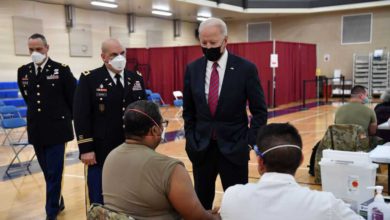

After months of waiting and a delay due to unseasonably cold temperatures, the Brood X cicada emergence has begun.
People across Greater Cincinnati are seeing the periodical insects emerge from the ground after 17 years.
And this is only the beginning.
"It has definitely started," said Gene Kritsky, a leading cicada expert and entomologist at Mount St. Joseph University.
Kritsky said he has been monitoring a spot in Mount Caramel, which saw its first emergence on May 15. Since then it's been "more and more" cicadas every night.

He said he saw 50 at his house on the West Side and is seeing reports of sightings on the Cicada Safari app across the city.
Greater Cincinnati typically sees emergence in mid-May after two days in a row with temperatures above 80 degrees and there's been a "soaking rain."
Be prepared:Everything you need to know about Brood X
We've had the perfect conditions:
- Soaking rains — check.
- Day 1 with temperatures in the 80s — Wednesday's high was near 81.
- Day 2 with temperatures in the 80s — Thursday's high is forecast at 84.
"They're itching to come out," he said.
It takes two full weeks before all the cicadas have emerged from their underground burrows. The ground temperature in Greater Cincinnati has to hit 64 degrees, the optimal temperature for cicadas to emerge.
Kritsky said over the next three to four days, the number of emerging cicadas will "get heavier," then it will level out over the course of the next few weeks.
'They'll be screaming': See where in Cincinnati the Brood X cicadas will be out in force
[ Want more cicada content? Get a digital subscription for unlimited access to Cincinnati.com. ]
We should hear them singing in earnest in about five days.
Then after that, we're faced with a few weeks of "cacophony" as they mate.
Male cicadas contract ridged membranes on their abdomens to make the sound, which is amplified by their almost-hollow abdomens.
Each species has its own sound, and the chorus can reach 90 to 100 decibels – as loud as a lawnmower, according to CicadaMania.
Their lifespan is four to six weeks, and they will start to die off in late June into July.
They're here. Now what?:What is the life cycle of the cicadas and how long will they be around

Want to see where they are?
If you want to know where Brood X is emerging in real-time, download the Cicada Safari app.
There are currently hundreds of verified pictures around Greater Cincinnati as of May 18. Images of cicada nymphs have been appearing since March.
The Cicada Safari app now has 135,000 downloads and is receiving 20,000 pictures a day from across the U.S. Before the emergence started, Kritsky said he was hoping for 50,000 pictures total; they already have more than 100,000.
Right now, the app is showing large clusters around Fort Mitchell, Pleasant Ridge, Oakley, Wyoming, Corryville, North College Hill and Northside.
Real-time data:Cicada Safari app allows people to report and track Brood X cicadas
Have you seen the cicadas yet?
Share your photo with us by emailing it to [email protected] and include your name and location.
[Get the buzz on cicadas and other Cincinnati news. Download the Cincinnati.com app here.]
Source link








